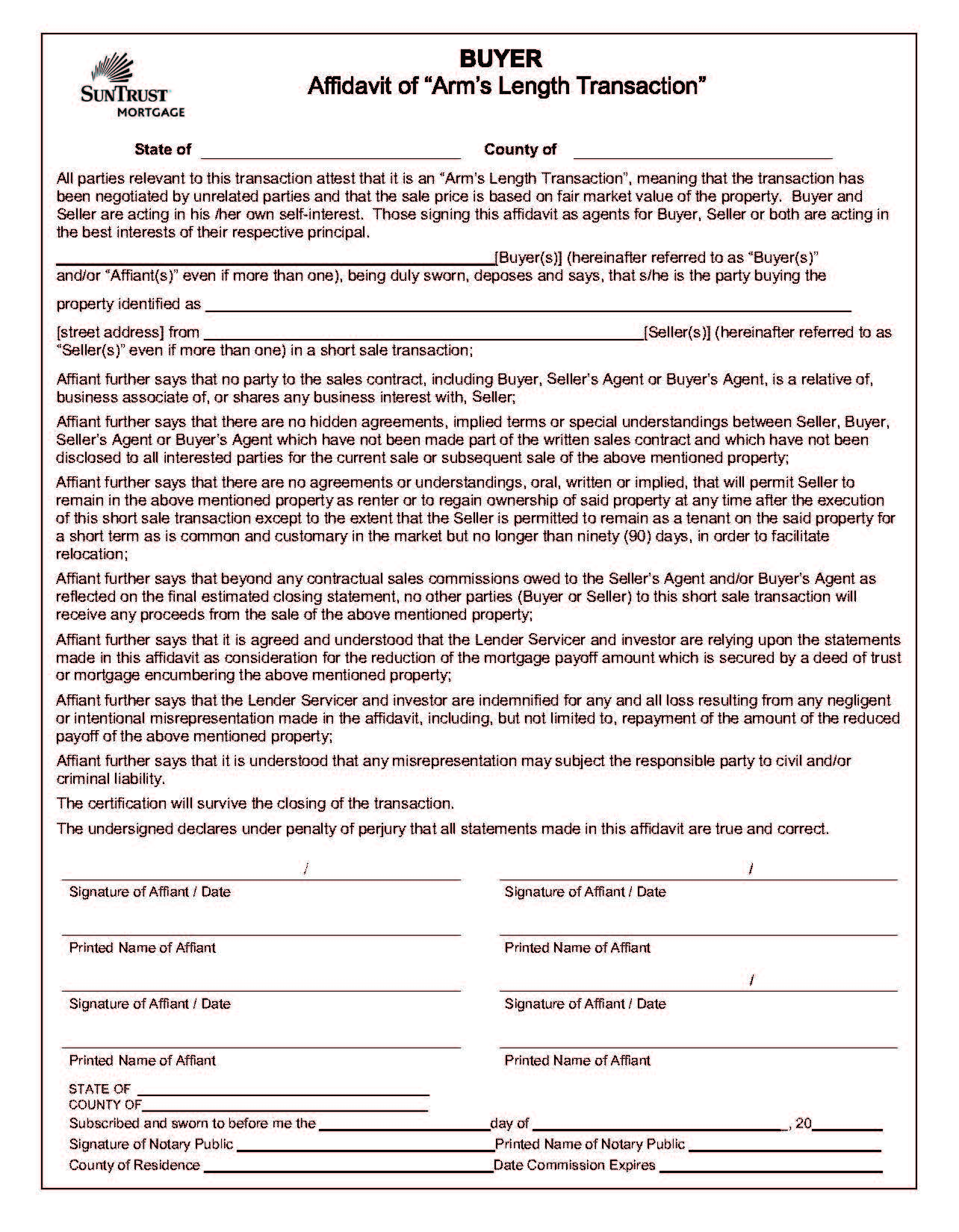
Arms length transaction fannie mae verification#
Rather, its purpose it to make sure we as appraisers know that determining this is part of what we do – the verification part. The purpose of this blog is not to define an arm’s-length transaction. If the details of a specific transaction are too cloudy to make the decision, then we may decide to get another comp. It’s our job to analyze any given transaction, and then decide if it is or is not arm’s-length. Nevertheless, to verify if this sale in a comparable is work we need to at least attempt to do. Proper verification of this transaction is more work than we would normally do, frankly, since, typically, such a buyer-seller situation does not come up all that often. It is only after the proper analyses that we can make this decision. This is why we must confirm sales with other than MLS. Frankly, I say it is an arm’s-length transaction but would understand if another appraiser, faced with the same circumstances, would say no. The point is the appraiser cannot answer that question until after having completed the necessary analyses to determine its status. However, the point is not whether it is or is not.

Some will say yes, whereas some will say no. Now, is that an arm’s-length transaction? The only difference is that a grandchild bought the property from a grandparent. It’s the same deal as any buyer could make.

The grandchild will put 10% down, while the grandparents will not carry any paper. Both the grandparents and the grandchild have the property appraised, and then from those appraisals negotiate a purchase price and terms. A grandchild offers to purchase a grandparent’s property. Now, here is another question: who determines if the sale is arm’s-length? Consider this true story. Could I change the scenario to make it a non-arm’s-length transaction? Yes.
Arms length transaction fannie mae free#
For example, what if the seller offered the property for sale as a FSBO? True, there was no exposure via the local MLS, but why does a property need to be offered for sale via the MLS just to qualify as having been “…offered for sale on the open market”…? Next, where is it written that a tenant-purchase of a duplex cannot/does not meet the requirements of an arm’s-length transaction? Why assume that merely because the tenant is the contract grantee, the parties to the contract reached that sales price by other than free and open negotiations?įrom the seller’s standpoint, in this scenario, is there any evidence the seller is under any undue influence to sell the property (to anybody, including the tenant)? So, if there is no undue influence to sell, as well as no undue influence to buy, and the parties arrived at the contract price via free and open negotiations, what is not arm’s-length about this transaction? Without reading any more into this scenario, nor reading anything out of it, I see this transaction as arm’s-length for these reasons. In all candor, however, I can’t say this question would be so cut-and-dried to me now. Therefore, based on this analysis, at one time I would have concluded this was NOT an arm’s-length transaction. Further, the tenant as the contract-grantee might have had some “sentimental” reasons to purchase the property (although I can’t imagine about how anybody could get sentimental about a duplex property), thus may have other-than-market motivations to purchase.

Let’s assume, for the purposes of this discussion, that some analysis on your part reveals that this property was never offered for sale via the local MLS. With those data only, how do you conclude if this is an arm’s-length transaction? Your client gives you a copy of the tenant’s current lease, as well as a copy of the signed and executory purchase and sales agreement. Now, consider a situation in which a tenant in a duplex is the contract grantee. Yet, both of them call for the appraiser to use only arm’s-length transactions as comparable sales (which is what the definition of market value assumes). Surprisingly, USPAP does not define the term arm’s-length transaction. However, was that correct? Let’s go to USPAP to see what it says. This is how this concept was taught to me when I took my original appraisal classes, oh so long ago. In other words, it was a typical market transaction. I thought such a transaction was one where the buyer and seller were traditionally motivated there was no coercion, no bias no relationship between the parties. Are we truly aware of its definition and its application? How often do we appraisers get into the mode where we think we know it all? Occasionally, do we need to step back and look at the way we do things, just to make sure we are not missing something? Is what we know to be true and correct really true and correct? I raise this issue relative to the concept of what an arm’s-length transaction is.


 0 kommentar(er)
0 kommentar(er)
